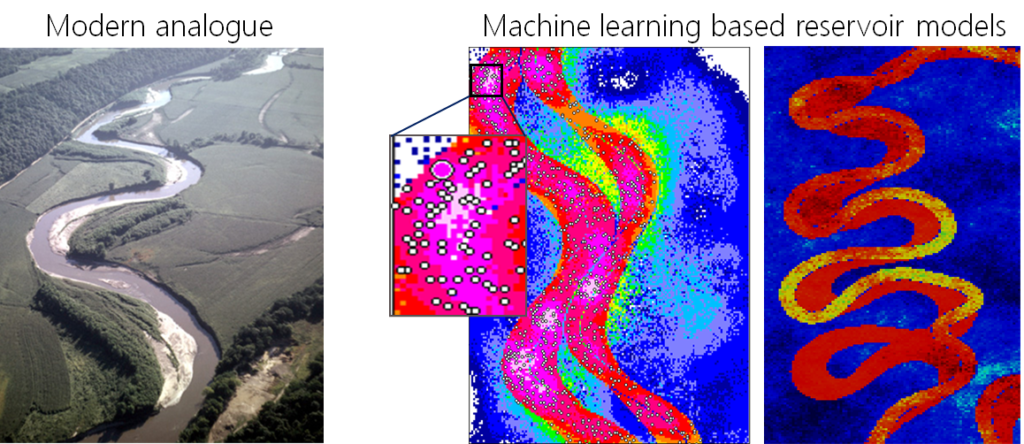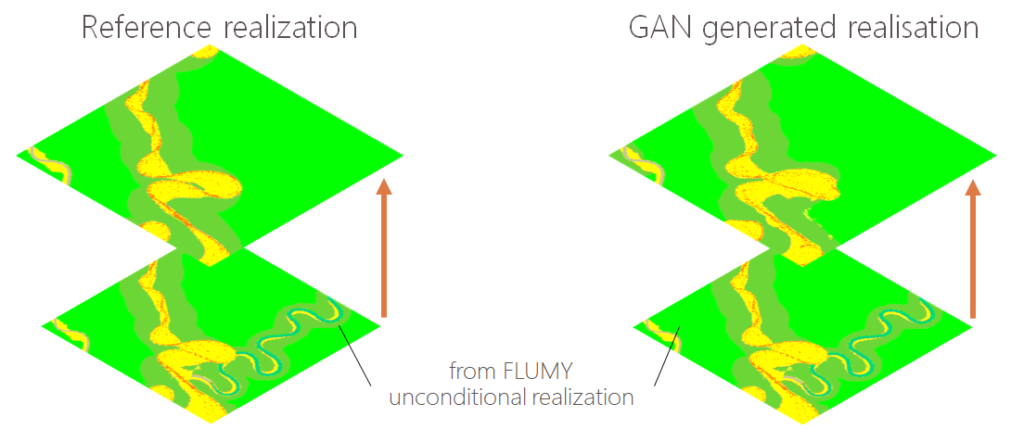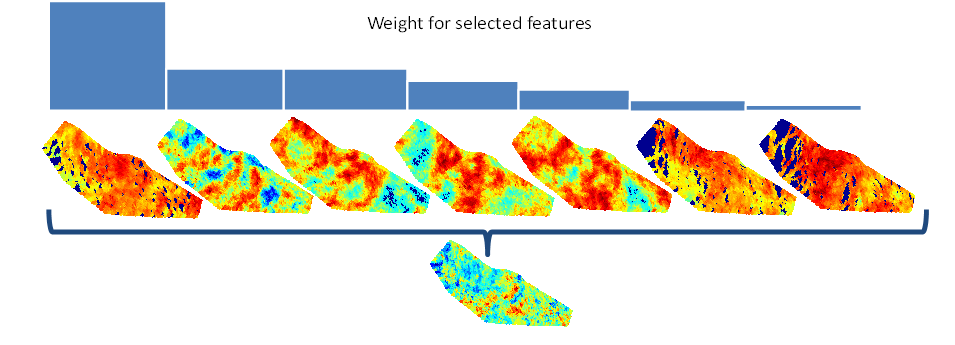variability and heterogeneity in the subsurface geology
Subsurface geology can be highly heterogenous and variable that makes it extremely difficult to describe with models due to limitations of modelling assumptions such as stationarity, linearity, Gaussianity, etc. Multivariate nature of subsurface characteristics and their dependencies is highly complex and subject to uncertainty, which makes it difficult to embed into models at the right level of detail and accuracy.
Machine learning methods offer more capability to model complex geological patterns and reproduce realistic natural geological dependencies for more accurate predictive modelling.
- Geomodelling with semi-supervised manifold learning
- GAN description of complex a 3D reservoir property distribution training on physics-based modelling
- Geomodelling with multi-scale feature selection and blending using multiple kernel learning
Geomodelling with semi-supervised manifold learning
Semi-supervised learning provide a way to embed curve linear spatial correlation structure by non-linear integration soft conditioning information learned from additional data, like seismic, without bounding stationarity and linearity assumptions and 2 point or multipoint statistics. This enables reproduction of realistic geological features, e.g. point bars.

by Demyanov, V., Pozdnoukhov, A., Kanevski, M. & Christie, M. A., International Geostatistics Congress GEOSTAT 2008, p. 627-636.
GAN description of complex a 3D reservoir property distribution training on physics-based modelling
Complex configurations of realistic geological structures are learned from process-based models outcomes (FLUMY) and reproduced with Generative Adversarial Networks (GANs).

Geomodelling with multi-scale feature selection and blending using multiple kernel learning (MKL)
Geological features from a range of geological scenarios are non-linearly blended together to predict reservoir property distribution. MKL learns relevant features from the range of scenarios and ranks their contribution to the prediction.

by Demyanov, V., Backhouse, L. J. & Christie, M. A., Dec 2015, In: Computers and Geosciences. 85, Part B, p. 16-25
